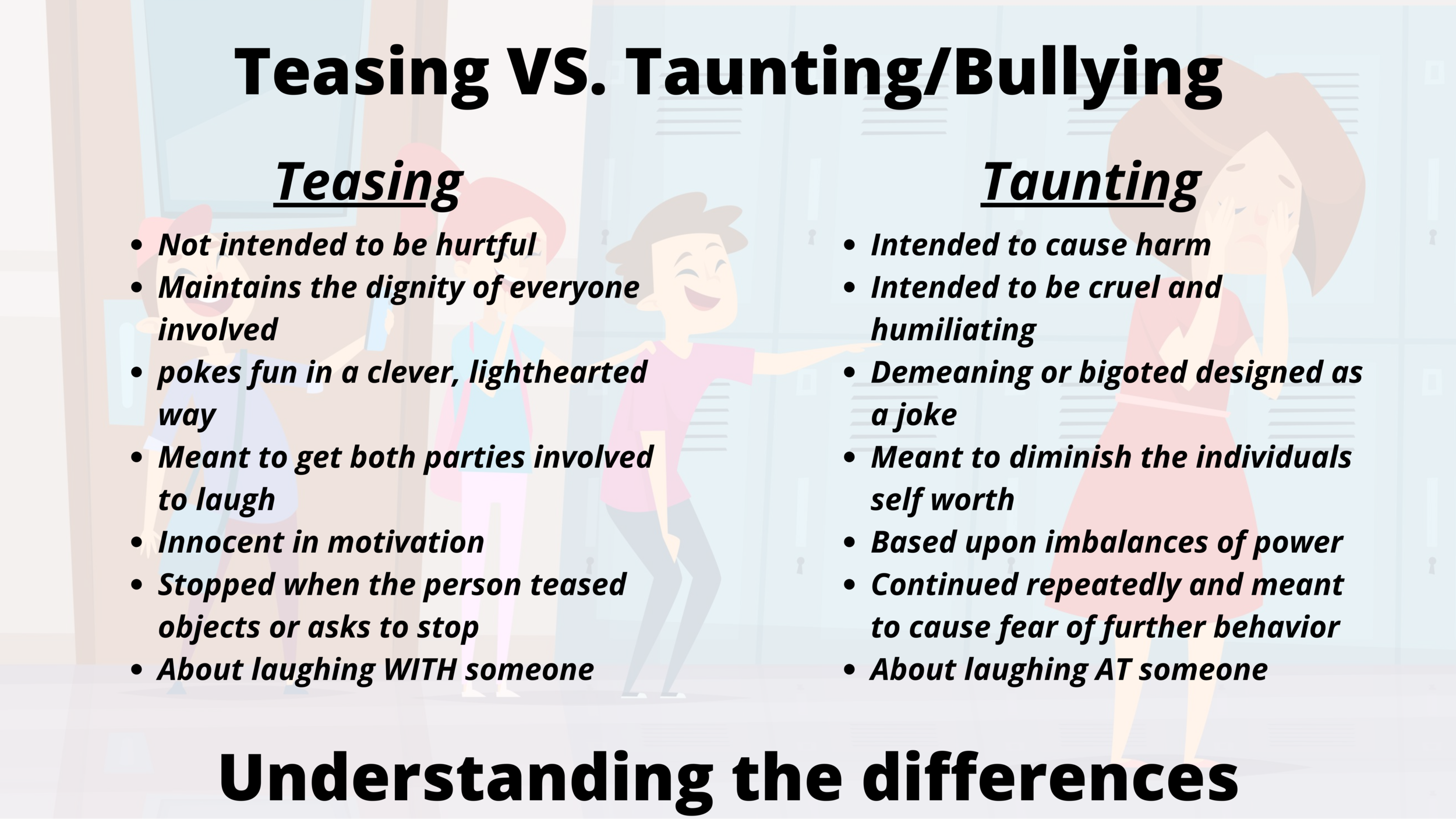In order to be classified as bullying, three key characteristics must be present in a situation:
- Repetitive Action(s) or Behaviors: The targeting must be repetitious over the course of time.
- Intent to Cause Harm: The behavior is aggressive in nature and is a deliberate and intentional action to harm or control another person(s) by targeting them.
- Imbalance of Power: The aggressor will target someone whom they perceive to have less power or “weaker” than they are in order to achieve their goal of hurting them.
- Imbalances of power can be both real or perceived i.e. physical strength, access to embarrassing information, social status, age or grade level.
“Mean” and “Unkind” behaviors or words that are not repeated over the course of time and do not cause a pattern of behavior are NOT bullying. However, this behavior should be monitored closely as it can quickly turn into bullying.
Understanding the Types of Bullying
- Physical:
- A physical means of harassing someone else such as kicking, hitting, tripping, pushing, spitting at, pinching, theft and/or destruction of personal property, intimidation of an individual based on physical location.
- Verbal:
- Utilizing words to harass someone such as name-calling, teasing, inappropriate comments especially those sexual in nature, taunting and threats
- Cyber (sometimes referred to as Digital):
- The harassment of an individual utilizing digital or electronic devises or means such as text messages, e-mails, liking, favoring or follow individual posts on social media platforms, spreading or repeating rumors sent by e-mail or text messages or sharing harmful posts about an individual on social media platforms (Facebook, SnapChat, Twitter, Instagram) sharing embarrassing or sexually suggestive pictures, videos or creating fake profiles. Learn more about cyberbullying here.
- Relational / Social (sometimes referred to as emotional):
- Purposely excluding someone from an activity with the intent to cause them hurt, convincing others not to be friends with a certain individual, intentionally creating and spreading untrue rumors or falsehoods, and character assassination.
Do you know the differences between taunting and teasing?



